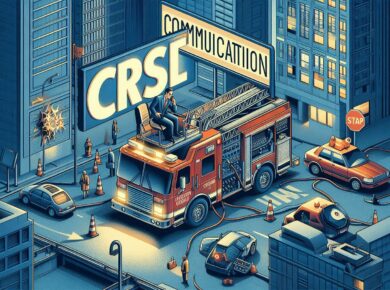Table of Contents
As we navigate through the digital age, communication continues to evolve at an unprecedented pace. New technologies and platforms are reshaping the way we connect, interact, and share information. Understanding these trends is crucial for individuals and businesses alike, as effective communication remains at the core of success in an increasingly connected world. This article explores the future trends in communication, highlighting the innovations that will define our interactions in the years to come.
The Evolution of Communication
Communication has come a long way from traditional methods like letters and face-to-face meetings. The rise of the internet and digital platforms has transformed how we share information and connect with others.
1. The Shift to Digital Communication
The transition from analog to digital communication has revolutionized the way we communicate.
- Instant Messaging and Social Media: Platforms like WhatsApp, Facebook, and Twitter enable real-time communication, breaking down geographical barriers.
- Video Conferencing: Tools such as Zoom and Microsoft Teams have made virtual meetings a norm, especially in the wake of the global pandemic.
- Email and Collaboration Tools: Digital communication tools streamline workflows and enhance collaboration across teams.
2. The Role of Mobile Technology
Mobile technology has become integral to communication, allowing for seamless connectivity on the go.
- Smartphones and Apps: The proliferation of smartphones has made it easier to communicate anytime, anywhere.
- Mobile-First Communication: Many businesses are prioritizing mobile-friendly communication strategies to engage users effectively.
- Instant Notifications: Push notifications keep individuals updated in real time, ensuring they never miss important information.
Emerging Trends in Communication
As technology continues to advance, several key trends are shaping the future of communication.
1. Artificial Intelligence and Automation
AI is revolutionizing communication by automating processes and enhancing interactions.
- Chatbots: These AI-driven tools provide instant responses to customer inquiries, improving engagement and support.
- Personalized Communication: AI algorithms analyze user data to deliver tailored messages and content.
- Natural Language Processing: Advances in NLP enable machines to understand and respond to human language more effectively.
2. Augmented and Virtual Reality
AR and VR technologies are transforming how we experience communication.
- Immersive Experiences: Virtual reality offers new ways to engage audiences, creating immersive storytelling and interaction.
- Remote Collaboration: Augmented reality can enhance remote collaboration by overlaying digital information onto the physical world.
- Training and Education: AR and VR provide innovative solutions for training and educational purposes, making learning more interactive.
3. The Rise of Video Content
Video content is becoming a dominant form of communication, driven by its engaging nature.
- Live Streaming: Platforms like Instagram Live and Twitch allow real-time interactions between creators and their audiences.
- Short-Form Videos: The popularity of TikTok and similar platforms emphasizes quick, impactful communication.
- Webinars and Online Events: Organizations increasingly use video for webinars, conferences, and virtual events to reach wider audiences.
4. The Shift to Visual Communication
Visual communication is gaining traction as a more effective way to convey messages.
- Infographics and Visual Storytelling: Visual content helps simplify complex information, making it easier to understand.
- Emojis and GIFs: These elements add personality and emotion to digital conversations, enhancing engagement.
- Visual Collaboration Tools: Platforms that emphasize visual collaboration, such as Miro and Canva, facilitate creativity and teamwork.
Implications for Businesses and Individuals
As these trends shape the future of communication, businesses and individuals must adapt to remain relevant.
1. Embracing Digital Transformation
Organizations should prioritize digital transformation to improve communication strategies.
- Investing in Technology: Businesses need to invest in the latest communication tools and technologies to stay competitive.
- Training and Development: Providing training on new communication tools ensures employees are equipped to utilize them effectively.
- Agile Communication: Adopting agile communication practices allows teams to respond quickly to changes and challenges.
2. Fostering Inclusivity and Diversity
As communication becomes more digital, it’s essential to prioritize inclusivity.
- Accessible Communication: Ensuring that communication tools are accessible to all individuals, regardless of ability, is crucial.
- Cultural Sensitivity: Understanding and respecting cultural differences in communication styles can enhance collaboration.
- Encouraging Diverse Perspectives: Fostering an environment where diverse viewpoints are valued enriches discussions and decision-making.
3. Prioritizing Data Privacy and Security
With increased digital communication comes the need for robust data privacy and security measures.
- Implementing Strong Policies: Businesses should establish clear data privacy policies to protect user information.
- Educating Employees: Providing training on data security practices helps minimize risks associated with digital communication.
- Transparency: Being transparent about how data is used builds trust with customers and stakeholders.
Conclusion
The future of communication is dynamic and full of possibilities. As we embrace advancements in technology, from artificial intelligence to virtual reality, we can expect to see significant changes in how we connect and share information. By understanding these trends and adapting to the evolving landscape, individuals and organizations can enhance their communication strategies and build stronger relationships. In this digital age, staying ahead of the curve is essential for effective communication and long-term success.






